

 Stop harping on about “good” years and “bad” years!
Stop harping on about “good” years and “bad” years!
The harvest is in full swing. And so, inevitably, the discussion whether or not it will be a good year. But what is a good year? Good for whom? Traditionally, a good or great year means that the wines have ageing potential. But everyone does not want to keep wines in their cellars (or have a cellar at all). Some prefer, for example, earlier-maturing, easy-drinking wines.
In any case, there is no such thing as a bad year. That’s clear. A year can, of course, be difficult for the winegrowers and give them too little volume. For most producers, the discussion if a year is good or not is completely irrelevant. They sell out of one vintage and then they start selling the next. It is you, the consumer, that has to age the wine if you want it older. Whatever the style/quality/volume of the wine, the producer must sell it. Good wines can be made every year, under the conditions nature provides.
Each vintage has its own character and you don’t abandon a producer you like because a certain year is getting bad press. At least, that’s our opinion. To hunt for the vintage 20XX (whichever that might be) just because it has been written up as “exceptional” is not particularly meaningful, we think.
Of course, there are differences between the years and that is the way we want it. Exactly as Philippe, one of our favourite growers in Burgundy often points out. “The year should be reflected in the wine.”
A common misconception is that prices go up if a year obtains high points by journalists or if the volume has been small. Yes, that may happen, not least for the very peculiar market for the most exclusive and expensive Bordeaux wines (but who buys those?). But most producers cannot raise their prices (or only very little). They want to keep their regular customers. Competition is fierce today.
Yes, the crazy focus on the quality of different vintages is relevant only for the most prestigious chateaux in Bordeaux and to some extent Burgundy and (possibly) Champagne. For wines purchased for investment purposes. Where the major part of the price is related to the name on the label and not to the pleasure derived from the contents.
Points have had a big impact on wine investors over the last 30 years. But points are losing their importance now that Robert Parker has retired.
Or will points still be important? Perhaps “Vivino points” will replace the guru points? Would that be better?
What do you think? Write a us comment!
The wine travel season is in full swing. We have already been to a number of wine regions and you get some short harvest reports in the Brief. The tours will continue until the end of October, with, for example, Piedmont, the Douro Valley, Rioja, the Loire Valley and many other destinations.
BKWine has also just been to China (I write this a little bit after I landed in Paris from Yinchuan at 5 AM this morning). I was a judge there in a now quite significant wine competition, The Silk Road Belt & Road Wine and Spirit Competition, an interesting experience. We will see and hear – and taste – more from China in the future. The wine industry is fundamentally different over there. Not easy to understand.
And, of course, a reminder of travel!
If you read what we write, I hope that you may someday join us on one of our wine tours. If you want to experience a wine region in close-up you can hardly find someone who can give you a greater wine travel experience, and hardly find any tour operator who knows more about wine (and wine travel) than we at BKWine. So sign up for a tour now!
Take a look at the two fantastic and unique winter wine tours (with places left): South Africa in February and New Zealand in March. Two unforgettable experiences.
If you would like to make a trip with your wine club, your tasting group, your company, a conference or something else, you do know (of course you do) that we also make tailor-made tours.
Get in touch!
Enjoy.
Britt & Per
PS: Recommend to your friends to read the Brief or – forward it to them (click here to send them the Brief)!
What’s on at BKWine Tours
2019
- Bordeaux, October 2-6, 2019
2020
- Chile and Argentina, January 20 – February 2, 2020
- South Africa, February 15-23, 2020
- New Zealand, March 9-24, 2020
- More to come
For more information please contact us on email or on phone (we’re on French time), or go to our wine travel site on www.bkwinetours.com!
We also make custom designed wine tours – on-demand tours for you and a group of friends, for your company (maybe to scout new winegrowers?), for a special event… We can combine winery visits and wine touring with other activities: gastronomic workshops, visit to an oyster farm, truffles hunting, cheese making, and more. More info on the custom designed and bespoke BKWine wine tours and travel here!
Read our book(s)
We have written several wine books, nine at the last count. One of them has been translated to English; the others are (so far) only available in Swedish. This is the one that is available in English: Biodynamic, Organic and Natural Winemaking, Sustainable Viticulture and Viniculture
All our books are on wine, but on different subjects: wines of the Languedoc, wine growing and wine making, the wines of France, Tuscany, Bordeaux, Piedmont, Burgundy, Champagne. Several have won prestigeous prizes and awards. Read more on our wine books.
From the World of Wine
In Brief
In short, news and stuff from the world of wine.
Phylloxera discovered in Washington State
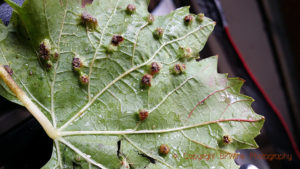 Walla Walla, a well-known wine region in Washington State, was believed to be exempt from the vine louse (phylloxera). Therefore, the recent discovery of the louse that is so dangerous to the vines dealt a heavy a blow to the wine producers. All of Washington, and especially Walla Walla, has the kind of sandy soil that the vine louse does not like. Therefore, according to the Washington State Wine Commission, a very large portion of the vineyards are not grafted on resistant American rootstocks. Apparently, some vineyards in Walla Walla have been weakening for several years but no one thought it was due to phylloxera. Now, however, the louse has been identified as the culprit and action can be taken. However, weakened vines can produce good quality and although the solution, in the end, is to graft, the producers can do their replanting at a slow pace. Read more about the phylloxera in Washington State: winespectator
Walla Walla, a well-known wine region in Washington State, was believed to be exempt from the vine louse (phylloxera). Therefore, the recent discovery of the louse that is so dangerous to the vines dealt a heavy a blow to the wine producers. All of Washington, and especially Walla Walla, has the kind of sandy soil that the vine louse does not like. Therefore, according to the Washington State Wine Commission, a very large portion of the vineyards are not grafted on resistant American rootstocks. Apparently, some vineyards in Walla Walla have been weakening for several years but no one thought it was due to phylloxera. Now, however, the louse has been identified as the culprit and action can be taken. However, weakened vines can produce good quality and although the solution, in the end, is to graft, the producers can do their replanting at a slow pace. Read more about the phylloxera in Washington State: winespectator
Frozen sauvignon blanc from South Africa gives more flavourful wine
There seem to be no limits to the creativity of winemakers. Diemersdal Estate in Durbanhill in South Africa has recently launched its third vintage of its Sauvignon Blanc Winter Ferment. For this wine, the grapes are harvested in February. The grapes are pressed and the juice gets 3 days of skin contact. However, the fermentation is not done until the South African winter. Before that, the juice is frozen for four months. This gives a very special taste to the wine, according to the owner and winemaker Thys Louw. What was most surprising to him was the high thiol contents of the wine. Much higher than what is usual in a South African Sauvignon blanc. Thiols are components that are created during fermentation and give Sauvignon Blanc its special aromatic character (tropical fruit, passion fruit, gooseberry…). Winter Ferment started as an experiment but has become a great success with wine consumers. Read more: Wine of South Africa
Travel: Join us on our wine tour to South Africa in February.
French consumers buy more and more organic wine
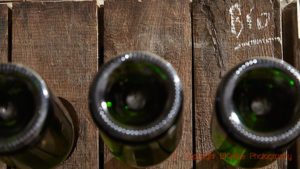 Organic wines are becoming more and more popular with French wine consumers. 48% of them would like to see a larger range of organic wines in the stores where they normally buy wine. The fact that the wine is organic is a buying argument for 50% of the young and 38% of the older consumers. Currently, more than 94,000 hectares of France’s nearly 800,000 hectares of vineyards are organically grown. France is thus in third place in the organic league after Spain and Italy. There are no signs that the interest from wine consumers will diminish and the wine industry is preparing. The number of vineyards in conversion is at record highs. Not surprisingly, most of the organic vineyards are around the Mediterranean, in Provence, the Rhone Valley and Languedoc-Roussillon. But Bordeaux is on the rise. Read more: datapressepremium
Organic wines are becoming more and more popular with French wine consumers. 48% of them would like to see a larger range of organic wines in the stores where they normally buy wine. The fact that the wine is organic is a buying argument for 50% of the young and 38% of the older consumers. Currently, more than 94,000 hectares of France’s nearly 800,000 hectares of vineyards are organically grown. France is thus in third place in the organic league after Spain and Italy. There are no signs that the interest from wine consumers will diminish and the wine industry is preparing. The number of vineyards in conversion is at record highs. Not surprisingly, most of the organic vineyards are around the Mediterranean, in Provence, the Rhone Valley and Languedoc-Roussillon. But Bordeaux is on the rise. Read more: datapressepremium
Read: Read the book that tells you the truth about organic wines.
Cru Bourgeois will be reintroduced in Médoc
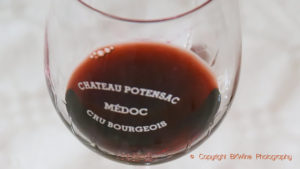 The designation Cru Bourgeois for chateaux has existed in Médoc for many years. Various attempts to rank them, roughly in the style of the 1855 classification, have been made since the 1930s. More or less successful. It was previously a (semi-official) classification but is currently a private label. But from 2020, a serious attempt will be made again.The Crus Bourgeois du Médoc association has received permission from the authorities to create a classification that will be updated every five years. Once again, a hierarchy of three groups will be introduced: Cru Bourgeois, Cru Bourgeois Supérieur and Cru Bourgeois Exceptionnel. The list of chateaux that aspire to be included in the classification will be published in February 2020. It is rather courageous to embark on a new classification in Bordeaux after the problems that the Saint Emilion classification has encountered. At the latest update in Saint Emilion, three chateaux were eliminated from the classification and subsequently these chateaux brought the whole procedure of the classification to court. It was many years ago now, but court proceedings are still going on. Maybe they are less hot-tempered in Médoc. If this will bring any particular benefit to consumers is more uncertain. More: cru bourgeois.
The designation Cru Bourgeois for chateaux has existed in Médoc for many years. Various attempts to rank them, roughly in the style of the 1855 classification, have been made since the 1930s. More or less successful. It was previously a (semi-official) classification but is currently a private label. But from 2020, a serious attempt will be made again.The Crus Bourgeois du Médoc association has received permission from the authorities to create a classification that will be updated every five years. Once again, a hierarchy of three groups will be introduced: Cru Bourgeois, Cru Bourgeois Supérieur and Cru Bourgeois Exceptionnel. The list of chateaux that aspire to be included in the classification will be published in February 2020. It is rather courageous to embark on a new classification in Bordeaux after the problems that the Saint Emilion classification has encountered. At the latest update in Saint Emilion, three chateaux were eliminated from the classification and subsequently these chateaux brought the whole procedure of the classification to court. It was many years ago now, but court proceedings are still going on. Maybe they are less hot-tempered in Médoc. If this will bring any particular benefit to consumers is more uncertain. More: cru bourgeois.
Travel: Come to Bordeaux on a wine tour.
Good quality harvest in Champagne after record-breaking summer
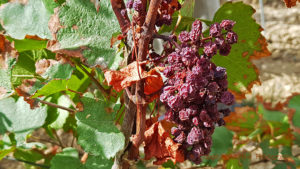 The harvest in Champagne was in full swing when we kicked off our autumn wine tour season with Champagne on September 11. And we mostly saw happy faces. Alexandre Penet at Champagne Penet-Chardonnet in Verzy looked very pleased when he talked about his healthy-looking grapes. Charles Philipponnat at the eponymous small prestige house in Mareuil-sur-Aÿ said he would have liked to have a slightly larger volume but he was very satisfied with the quality of the grapes and the balance between the acidity and the sugar. Marine Zabarino at Champagne Vincey in Oger confirmed high sugar levels. This small and very ambitious grower in the Côte des Blancs never chaptalizes. Overall there should not be much need for chaptalizing after this very warm summer. However, heat is not only positive. It is one of the things that have reduced the volume. We sometimes saw small dried grapes in the bunches, like raisins. This was the result of the two heatwaves this summer with record temperatures for Champagne of 42.9 degrees C.
The harvest in Champagne was in full swing when we kicked off our autumn wine tour season with Champagne on September 11. And we mostly saw happy faces. Alexandre Penet at Champagne Penet-Chardonnet in Verzy looked very pleased when he talked about his healthy-looking grapes. Charles Philipponnat at the eponymous small prestige house in Mareuil-sur-Aÿ said he would have liked to have a slightly larger volume but he was very satisfied with the quality of the grapes and the balance between the acidity and the sugar. Marine Zabarino at Champagne Vincey in Oger confirmed high sugar levels. This small and very ambitious grower in the Côte des Blancs never chaptalizes. Overall there should not be much need for chaptalizing after this very warm summer. However, heat is not only positive. It is one of the things that have reduced the volume. We sometimes saw small dried grapes in the bunches, like raisins. This was the result of the two heatwaves this summer with record temperatures for Champagne of 42.9 degrees C.
Travel: Come on a bubbly wine tour to Champagne.
Dry year but good quality in Burgundy
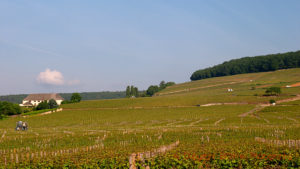 Burgundy winemakers have been fighting the elements this year. Spring frosts, hail, millerandage during flowering and – perhaps most damaging – lack of water. But when the harvest started on August 31 for the crémant wines, the spirits were high. In prestigious Côte d’Or, picking started around 13 September and continued for 10 days in beautiful and sunny weather.
Burgundy winemakers have been fighting the elements this year. Spring frosts, hail, millerandage during flowering and – perhaps most damaging – lack of water. But when the harvest started on August 31 for the crémant wines, the spirits were high. In prestigious Côte d’Or, picking started around 13 September and continued for 10 days in beautiful and sunny weather.
Philippe Bernard at Domaine Clos Saint Louis in Fixin is very pleased with the quality. “But because of the heatwave we will have a little less volume than usual”, he says.
Award winning wines from central China
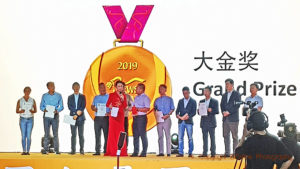 “China started making good wines in 2015,” Lens Moser, from Austria, said when I met him a few days ago in Yinchuan, in the Gobi desert, in China. He thinks that Ningxia, the autonomous region where this is located, with its almost 40,000 ha of vineyards, is perhaps the most promising region and that is also where he himself makes wine. I was there recently to serve as a judge in The Silk Road Tasting, or the Belt & Road Wine and Spirit Competition. 900 wines participated in the competition. China is a young wine country but they learn fast. Compared to when Britt was judging a competition in China in 2005 (a pioneering event!) the change is enormous. Today you can find wines of very good quality here, even if not all reach that level (but which wine region would you not say that about?). More will follow later on this but here you get the names of the wineries that won the “Great Gold Medal”, the highest award (the medals were awarded for specific cuvées, but I skip the names of the cuvées so that the list will not be too long): Helan Hong, Ho-lan Soul, Chateau Mihope, Lan Cui, Qilian, Silver Heights, Gamubur, Great Wall Eastern, Jade Dove, Ge Rui Hong, Silkroad, Chandon, Shaen, Helan Mountain, Senpatina, Yuanrun ShanQi, Yuyue, Miqin, Duke, Rong Yuan Mei Hong. The full medal awards list at the BRWSC 2019.
“China started making good wines in 2015,” Lens Moser, from Austria, said when I met him a few days ago in Yinchuan, in the Gobi desert, in China. He thinks that Ningxia, the autonomous region where this is located, with its almost 40,000 ha of vineyards, is perhaps the most promising region and that is also where he himself makes wine. I was there recently to serve as a judge in The Silk Road Tasting, or the Belt & Road Wine and Spirit Competition. 900 wines participated in the competition. China is a young wine country but they learn fast. Compared to when Britt was judging a competition in China in 2005 (a pioneering event!) the change is enormous. Today you can find wines of very good quality here, even if not all reach that level (but which wine region would you not say that about?). More will follow later on this but here you get the names of the wineries that won the “Great Gold Medal”, the highest award (the medals were awarded for specific cuvées, but I skip the names of the cuvées so that the list will not be too long): Helan Hong, Ho-lan Soul, Chateau Mihope, Lan Cui, Qilian, Silver Heights, Gamubur, Great Wall Eastern, Jade Dove, Ge Rui Hong, Silkroad, Chandon, Shaen, Helan Mountain, Senpatina, Yuanrun ShanQi, Yuyue, Miqin, Duke, Rong Yuan Mei Hong. The full medal awards list at the BRWSC 2019.
Features
Features that we have published during the past month, with lots of reading for you.
Swiss wines and winegrowers celebrated at the 2019 edition of the Vevey Fête des Vignerons
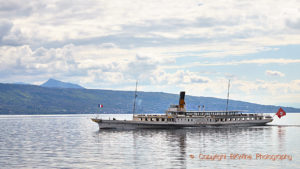 The Fête des Vignerons de Vevey, held in the beautiful wine region of Canton of Vaud four times a century, is a tribute to the vine, wine and winegrowers. The 2019 edition attracted more than 1 million visitors during three weeks and gave a fantastic show celebrating the terroir and its treasures but also life and living traditions. It was a special occasion to discover again the amazing vineyard terraces of Lavaux, listed as a Unesco World Heritage, and also an occasion to enjoy chasselas wines.
The Fête des Vignerons de Vevey, held in the beautiful wine region of Canton of Vaud four times a century, is a tribute to the vine, wine and winegrowers. The 2019 edition attracted more than 1 million visitors during three weeks and gave a fantastic show celebrating the terroir and its treasures but also life and living traditions. It was a special occasion to discover again the amazing vineyard terraces of Lavaux, listed as a Unesco World Heritage, and also an occasion to enjoy chasselas wines.
Read more in Alexandra Foissac’s article on BKWine Magazine: Swiss wines and winegrowers celebrated at the 2019 edition of the Vevey Fête des Vignerons.
Wine tours
Some information about current and future wine tours with BKWine.
South Africa, a journey full of experiences, wine and good food | wine tour
 Our days in South Africa are filled with experiences. Cape Town with its famous Waterfront and the cable car (the aerial cableway as they call it) up to Table Mountain with stunning views. The excursion to the Cape Peninsula which takes us to the legendary Cape of Good Hope. Stellenbosch, the pleasant and lively university town with its beautiful, dazzling white houses in the typical Cape Dutch style. We will visit the south coast and the small town of Hermanus and the Walker Bay wine region (with perhaps the most outstanding gastronomic experience). The ocean gives a slightly cooler climate and grapes such as pinot noir and sauvignon blanc thrive. The road trips across the landscape are experiences not to miss too. We admire the landscape and the mountains that are constantly changing colour, not least during the spectacular journey from Hermanus to Franschhoek. There will, of course, be many wine tastings, as well as delicious meals. South Africa is famous today for its cuisine, with influences from many different countries. Join us in South Africa in February.
Our days in South Africa are filled with experiences. Cape Town with its famous Waterfront and the cable car (the aerial cableway as they call it) up to Table Mountain with stunning views. The excursion to the Cape Peninsula which takes us to the legendary Cape of Good Hope. Stellenbosch, the pleasant and lively university town with its beautiful, dazzling white houses in the typical Cape Dutch style. We will visit the south coast and the small town of Hermanus and the Walker Bay wine region (with perhaps the most outstanding gastronomic experience). The ocean gives a slightly cooler climate and grapes such as pinot noir and sauvignon blanc thrive. The road trips across the landscape are experiences not to miss too. We admire the landscape and the mountains that are constantly changing colour, not least during the spectacular journey from Hermanus to Franschhoek. There will, of course, be many wine tastings, as well as delicious meals. South Africa is famous today for its cuisine, with influences from many different countries. Join us in South Africa in February.
South Africa, February 15-23, 2020. Book your wine tour to South Africa now!
New Zealand, far, far away and a very special (wine) country | wine tour
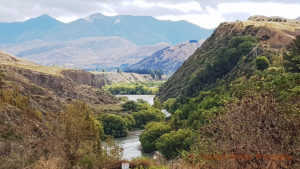 New Zealand is a special country. It is far away from most other places. Well, all to be honest. It is a narrow country, surrounded by water which naturally affects the climate. Winters are mild and summers are warm but rarely too hot. The west coast is rainy. The vineyards, on the other hand, are protected on the east coast where it is drier and warmer. The scenery is fascinating. And we will show you a lot of it during the 16 days of the tour. Auckland is the big city on the North Island. Here we begin our journey which does not end until we arrive in the lively town of Queenstown on the South Island. Before we reach it we visit the capital Wellington and the wine regions of Marlborough, Wairarapa with Martinborough, Hawke’s Bay, Waiheke Island and Central Otago. We have learnt about the Maori culture, looked at glaciers and hot water-gushing geysers. We have tasted a large variety of wines during our approximately 20 different producer visits.
New Zealand is a special country. It is far away from most other places. Well, all to be honest. It is a narrow country, surrounded by water which naturally affects the climate. Winters are mild and summers are warm but rarely too hot. The west coast is rainy. The vineyards, on the other hand, are protected on the east coast where it is drier and warmer. The scenery is fascinating. And we will show you a lot of it during the 16 days of the tour. Auckland is the big city on the North Island. Here we begin our journey which does not end until we arrive in the lively town of Queenstown on the South Island. Before we reach it we visit the capital Wellington and the wine regions of Marlborough, Wairarapa with Martinborough, Hawke’s Bay, Waiheke Island and Central Otago. We have learnt about the Maori culture, looked at glaciers and hot water-gushing geysers. We have tasted a large variety of wines during our approximately 20 different producer visits.
New Zealand, March 9-24, 2020. Book your wine tour to New Zealand now!
Don’t be an egoist! Share with your friends and other wine enthusiasts! Forward the Brief to your friends! Suggest that they sign up for a free subscription !
© Copyright BKWine








